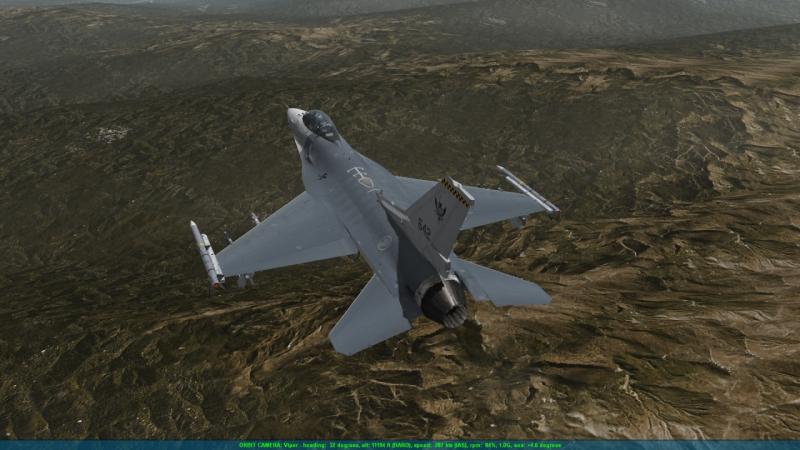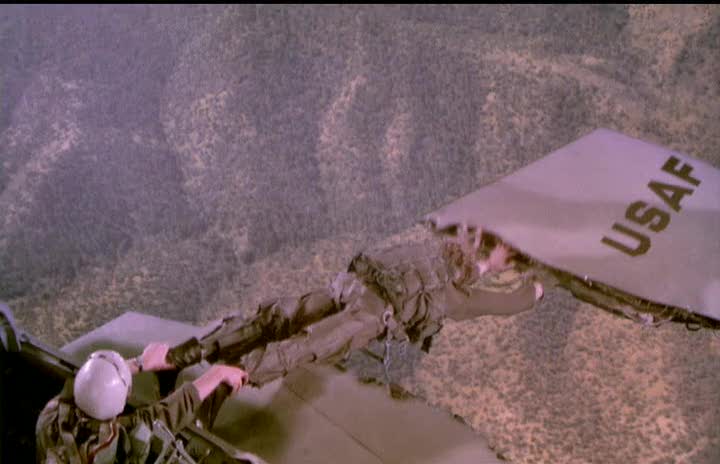-
Posts
9,137 -
Joined
-
Last visited
-
Days Won
27
Content Type
Profiles
Forums
Gallery
Downloads
Store
Everything posted by MigBuster
-
Who knows..........might have been more than just F-16s http://www.businessinsider.com/iraq-says-it-needs-drones-and-f-16-fighter-jets-to-fight-al-qaeda-2013-10
-

The Swiss Confederation finally rejects the Gripen
MigBuster replied to B52STRATO's topic in Military and General Aviation
Great - i'll deal with the Airliner in the morning.........goodnight -

Could a DCS-Style sim ever have a deep storyline?
MigBuster replied to TeaAndScones's topic in The Pub
It could be done - like with anything it comes down to having the resources to do it. If all their time is on modeling and a new terrain then everything else goes out the window. -
Welcome back James Do you have the original 2004 WOV? - just thinking that it might be okay on one of the original builds: PIII 600mhz 128mb - 256mb RAM 32mb gfx card If you patched it to 2008 - then that needed more resource to run Issue might be the gfx but worth a try
-

SF2 Early Su-27
MigBuster replied to Foxbat1966's topic in Thirdwire: Strike Fighters 2 Series - General Discussion
http://combatace.com/topic/44026-converting-older-planes-to-work-in-sf2-%E2%80%93-a-basic-guide-by-migbuster/ -

EDGE news develop
MigBuster replied to SilverDragon's topic in Digital Combat Simulator Series General Discussion
Sounds like a retirement from combat Flight sims is coming -
Could be a bit of everything - they wont tell us the real motivation As part of defense you still need to degrade the other sides means to throw bombs at you, you cant take out oncoming ground forces with A-A missiles.
-
I knew there must have been some kind of plan! was shocked to see an IL-28 landing - and also a silver MiG-23ML
-
http://theaviationist.com/2014/05/13/two-new-stories-baranek/ Two unknown Tomcat stories told by the former F-14 Tomcat RIO Dave “Bio” Baranek. Developed in the late 1960s as a multi-mission fighter, the F-14 Tomcat’s mission was to protect U.S. Navy Carrier Battle Groups (CVBG) from raids conducted by the Soviet bombers armed with long-range cruise missiles. On a typical sortie, the aircraft would keep a combat air patrol station located several hundred miles from the carrier. The loiter and radius advantage of the Tomcat were achieved thanks to its swept wings, which have been the greatest engineering challenge in F-14’s development, as explained to The Aviationist by a very special reader. “One of the most distinctive and memorable features of the F-14 Tomcat was its variable geometry wings” says Dave “Bio” Baranek, author of the book Topgun Days: Dogfighting, Cheating Death and Hollywood Glory as One of America’s Best Fighter Jocks and a twenty-year experienced Tomcat Radar Intercept Officer (RIO). Bio explains that the F-14’s wings were controlled by “a microprocessor known as the Central Air Data Computer(CADC) — world’s first microprocessor (designed and developed by Steve Gaeller and Ray Holt from 1968-1970 for the F-14A Tomcat). As Baranek explains, the variable geometry wings brought several advantages to the Tomcat: “At their forward sweep position of 20 degrees (the angle of the wing leading edge), they allowed the F-14 to have a relatively low landing speed, an important consideration for safe operations from an aircraft carrier. As speed increased, they would automatically sweep back based on indicated Mach number (IMN) to a fully-swept position of 68 degrees, reducing drag for high speed flight” (and also to reduce wingspan for aircraft movement and storage – Bio told us that on the flattop’s deck the wings could be swept back to 75 degrees in a position called “oversweep”). The F-14’s wings could also be manually swept, even if, according to Baranek, the Tomcat’s driver had to consider several factors since “The pilot could manually sweep the wings aft of the position determined by the CADC, but not forward of that position, as that could cause structural damage due to the tremendous lift it would generate. Manually sweeping the wings back could confuse an adversary by giving a false indicator of F-14 airspeed. But it also provided much less lift and less maneuverability, so it was a “tactic” or trick that would be used very carefully.” This last statement is confirmed by Bio himself who recalled exclusively for The Aviationist, the tale of a Tomcat’s driver who forgot the wing swept aft in the middle of a furball in the F-14 simulator. “One time in the F-14 simulator (the name of which was 2F112), we completed our planned work and still had time, so we were messing around. A very good pilot was flying, I don’t remember the RIO, and I was out at the control console. The pilot wanted to try to get out of flat spins by manually sweeping the wings aft. I don’t remember if it helped, but after he did it a few times we still had some time left, so he said, “Let me fight a MiG-21.” The operator set up the simulator and they started a dogfight. After about two minutes, the pilot said, “Wow, this is the best MiG-21 I’ve ever seen, I should have killed him by now!” Then I looked at a display that showed an external view of the F-14 and told the others at the control console: “Look, he still has the wings swept aft!” They couldn’t contain their laughter and told him, “Check your wingsweep!” The pilot put the wings in Auto and the engagement ended soon after that with a kill by the Tomcat.” Besides being a Naval Flight Officer, Baranek completed an assignment as Top Gun instructor at the Navy’s elite Fighter Weapons School (based at the then Miramar Naval Air Station), hence his chance to see how the F-14‘s swept wings could be used as an advantage during a real dogfight, also against more manoeuvrable aircraft. In particular Bio recalls an episode involving a Naval Aviator flying his 1 vs 1 Graduation hop against a Top Gun instructor flying a very particular adversary aircraft. Before telling the story, Baranek explains how a typical 1 vs 1 Graduation flight took place: “For the “Graduation 1 vs 1″ flight in the Top Gun class, instructors arranged for students to fight an aircraft whose identity would be unknown until merge plot. Everyone briefed against everyone, so it was legal. This was in the 1980s, and students didn’t know if they were going against an A-4, F-5, or something else. The set up was a 30-mile intercept, so you discovered the identity of your opponent when you could visually ID him, maybe 4-5 miles before the merge. To keep things interesting they sometimes arranged for an outside aircraft, such as a QF-86 from the Pacific Missile Test Center that would be flown by a live pilot for the event.” In the second half of the 1980s the Hornet drivers alongside with their then new F/A-18s, began to join Topgun classes and some of them believed they had a huge advantage over the bigger Tomcat during a real air-to-air engagement. “Around 1987, an F/A-18 pilot went through the Topgun class, and he kept trash-talking F-14s. He called them “interceptors” and bad-mouthed them at every opportunity,” says Bio. “Most instructors at this time had been F-14 pilots and RIOs, and they decided to teach him a lesson. So they had a former instructor participate in the Graduation 1 vs 1 secretly, and he was flying an F-14A. This Hornet pilot went out for his 1v1 flight, ran the intercept, and as he approached the merge saw an F-14 with wings fully swept. The Hornet pilot thought, “The F-14 is going 450 knots or more, I’m going to win.” So at the merge he pulled hard into the vertical. What he did not know: the F-14 had burned much of its fuel, so it was light. Plus, it was only doing 300 knots. At the merge, when the Hornet pulled into the vertical, the Tomcat selected wings to Auto, lit afterburner, and did a max performance turn into the vertical. Since the Hornet was much faster, the Tomcat ended up dead six on the Hornet at one mile and called “Fox 2, kill.” Following this first engagement “To get max training benefit from the opportunity they followed up with a regular one”but as Baranek recalls “the story was a big hit around Miramar, which of course was home to West Coast F-14s. It also reiterated one of Topgun’s main teaching points, which is credited to the Red Baron himself: “It’s not the crate, but the man sitting in it.”
- 1 reply
-
- 6
-

-
http://www.youtube.com/watch?v=Fwo-fY3HHA8
-
kudos for keeping the cold war relics flying http://www.youtube.com/watch?v=HfVZKXrk_ZU
-

DCS/LOMAC Screen Shot Thread
MigBuster replied to Dave's topic in Digital Combat Simulator Series General Discussion
-
Cats are a near perfect killing machine - the speed at which they can react is quite something - even against birds. Cool they made a scaled down version to keep as a pet.
-

Recommended Reading, Military and General Aviation
MigBuster replied to Fubar512's topic in Military and General Aviation
Short overview of versions and operations in Astan - and many others http://www.ospreypublishing.com/store/Sukhoi-Su-25-Frogfoot_9781782003595 -

Mixed formation F-4G and F-16?
MigBuster replied to Stratos's topic in Military and General Aviation
Well that's up for debate - as I said the F-16 with the ASQ-213 HTS (Weasel in a can) is what gives the F-16CJ/DJ/CM/DM the required avionics to replace the F-4G including the second man - you could argue on what was more effective. I think most F-16s could carry AGM-45 and AGM-88 - this doesn't make them WIld Weasels - e.g in Vietnam a multitude of jets carried and fired AGM-45 not only the dedicated A-6B / EF-4C/ F-100F / F-105F/G These days the only things a second man is good for seems to be.............. -
Despite whats its been through - Iraq likely has far more economic potential due to its oil industry.
-

Mod for in-flight map?
MigBuster replied to Bbbumpy's topic in Thirdwire: Strike Fighters 2 Series - General Discussion
http://combatace.com/files/file/8446-remove-the-red-planes-from-the-in-flight-map/- 11 replies
-
- more realistic
- less information
-
(and 1 more)
Tagged with:
-

Mixed formation F-4G and F-16?
MigBuster replied to Stratos's topic in Military and General Aviation
Good book - been a while since I read it though. Sounds like a hunter killer team - the F-4G was the primary SEAD platform in 91 - what were the F-16s carrying? A famous mission involved F-16A block 10s taking out SAM sites with dumb bombs - were supposed to have SEAD support from F-4Gs and area jamming from EF-111s. The F-16CJ Block 50/52 was the SEAD version that carried the HTS - this pod replaced the F-4G :) . I think but would need to check - in 1991 the newest F-16s in theatre were Block 40/42s. - not even sure there were any active F-16CJ squadrons. -
Would need to see some charts from manual supplements really - only French manual I have is for the M2K - but no performance data alas From an aero point of view the Mirage F1 is missing some major features seen on modern lifting tail designs, and although it has canards the Viggen is a different design from the modern euro canards.




